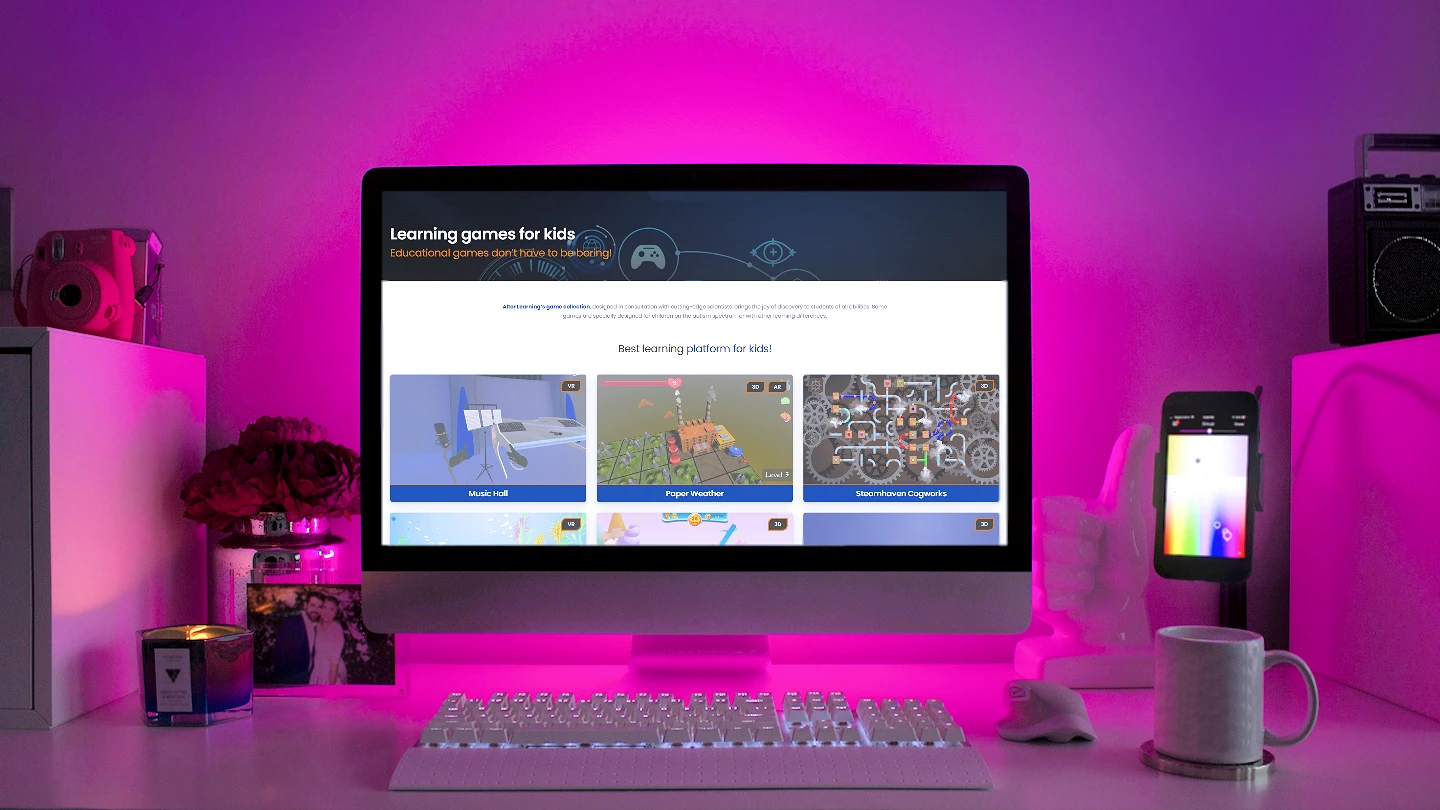Virtual reality (VR) technology allows users to experience a simulated environment. Though initially popularized in gaming and entertainment, its applications in education are rapidly expanding.
Research Findings
In 2022, Drs. Rafael Villena-Taranilla, Sergio Tirado-Olivares, Ramon Cozar-Gutierrez, and Jose Antonio Gonzalez-Calero published a meta-analysis in the Educational Research Review, examining 21 past studies over the previous decade. This research confirmed that virtual and augmented reality has a tangible positive effect on student learning.
While the study explored VR’s application in various subjects for K-6 students, it emphasized that immersive VR, where students can navigate and interact within a virtual space, brought the most significant benefits.
The Benefits of VR in Education
The meta-analysis found that VR can improve student learning in a variety of ways, including:
Increased engagement: VR can captivate students, leading to better retention. For instance, a study by the University of California, Irvine demonstrated that students using VR to learn about the human heart had a higher recall rate than those who used traditional methods.
- For example, a study by the University of California, Irvine found that students who used VR to learn about the human heart were likelier to remember the information than those who learned about the heart through traditional methods.
Improved understanding: Complex ideas become more understandable with VR’s visual aid. A University of Southern California study highlighted that VR users better grasped solar system concepts like gravity and orbital motion than their counterparts.
- For example, a study by the University of Southern California found that students who used VR to learn about the solar system were more likely to understand the concepts of gravity and orbital motion than students who learned about the solar system through traditional methods.
Enhanced collaboration: VR encourages group learning, fostering peer-to-peer education. A University of Cambridge study showed VR users collaborating on a design project yielded more inventive results than solo participants.
- For example, a study by the University of Cambridge found that students who used VR to collaborate on a design project were likelier to come up with creative solutions than those who worked alone.
Reduced anxiety: The University of Pittsburgh discovered that VR exposure therapy for acrophobia (fear of heights) significantly reduced subsequent real-world anxiety.
- For example, a study by the University of Pittsburgh found that students who used VR to undergo exposure therapy for fear of heights were less likely to experience anxiety in real-world situations than those who did not.
The Limitations of VR in Education
While VR has many potential educational benefits, some limitations must be considered.
These limitations include:
Cost: While VR headset prices are dropping, initial investment can be a barrier for many institutions.
- Pro Tip: However, the cost of VR headsets is decreasing, and several affordable options are now available.
Accessibility: Not all VR headsets cater to students with disabilities, though many are designed to be more inclusive.
- Pro Tip: However, several VR headsets are designed for accessibility, and there are also many ways to make VR more accessible to students with disabilities.
Motion sickness: Some individuals may feel queasy with extended VR use. A high refresh rate and periodic breaks can help alleviate this.
- Pro Tip: This can be minimized by using VR headsets with a high refresh rate and by taking breaks from VR every 20-30 minutes.
Information gap: The long-term effects of VR on learning need more extensive research, though current data is promising.
- Pro Tip: However, the available research suggests that VR is a safe and effective learning tool.
Conclusion
Virtual reality technology has a significant positive impact on student learning across various subjects. It is especially beneficial when used in fully immersive virtual experiences.
Frequently Asked Questions
How does immersive virtual reality (VR) enhance student learning?
– Immersive VR maintains student interest and offers a vivid, engaging learning environment.
– It promotes collaborative problem-solving and exploration.
– VR allows for experiential learning, like visiting historical locations or performing scientific experiments.
– It can elevate student confidence and motivation by allowing them to visualize success in challenging scenarios.
What are the benefits of using immersive VR in education?
– VR elevates student engagement and motivation.
– It presents a tangible, interactive learning atmosphere.
– Students can collaboratively address issues or generate innovative ideas.
– VR offers hands-on learning experiences, like navigating a virtual human anatomy or running a chemistry experiment.
– It can foster confidence and increase motivation through successful visualizations.
What are the limitations of using immersive VR in education?
– Cost and hardware requirements can be prohibitive for some.
– Motion sickness may be a concern for specific users.
– There’s limited educational content available for VR.
– Technical issues, such as tracking or battery, may arise.
What are the best practices for using immersive VR in education?
– Ensure VR content aligns with educational objectives and is of high quality.
– Provide students with preliminary training on VR equipment.
– Define clear learning objectives for VR activities.
– Encourage collaborative problem-solving.
– Schedule breaks to prevent motion sickness and ensure safe and effective use.



